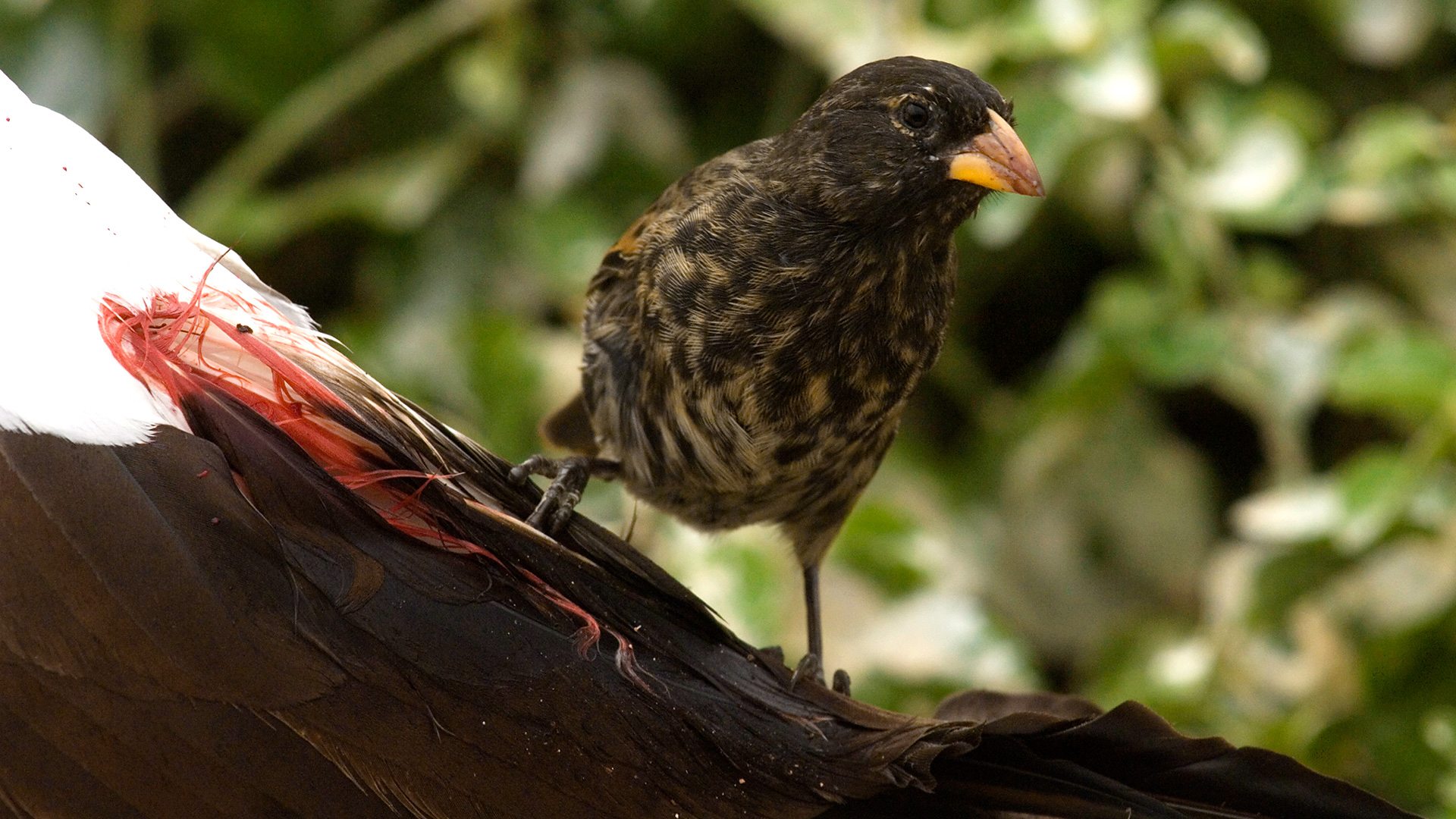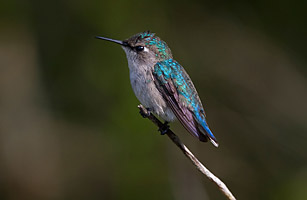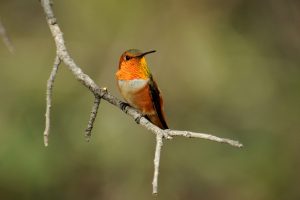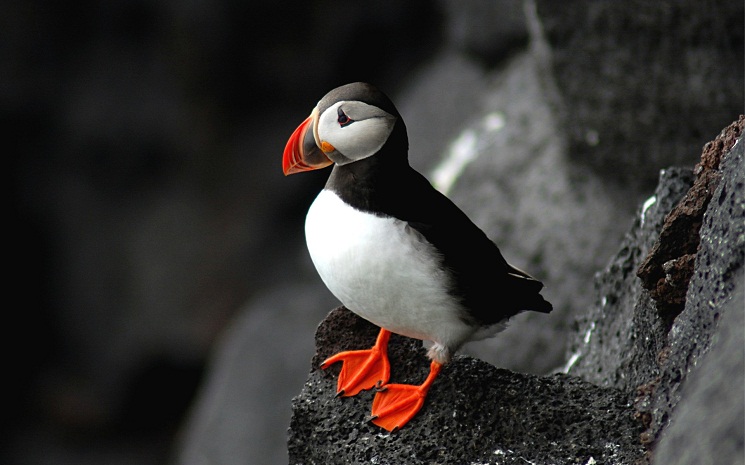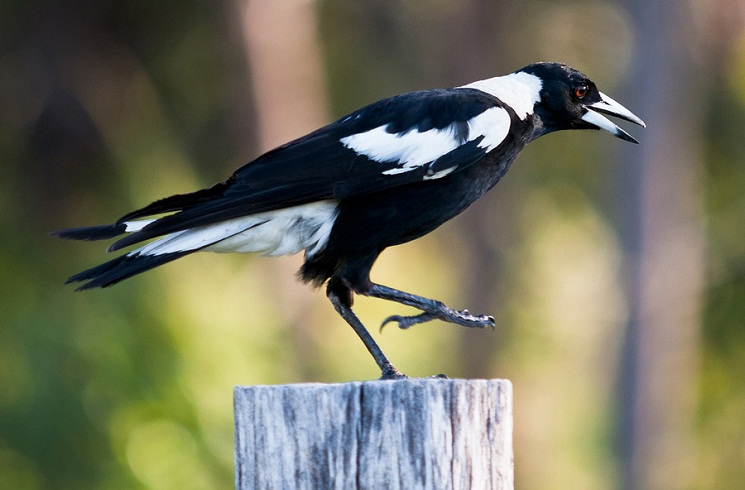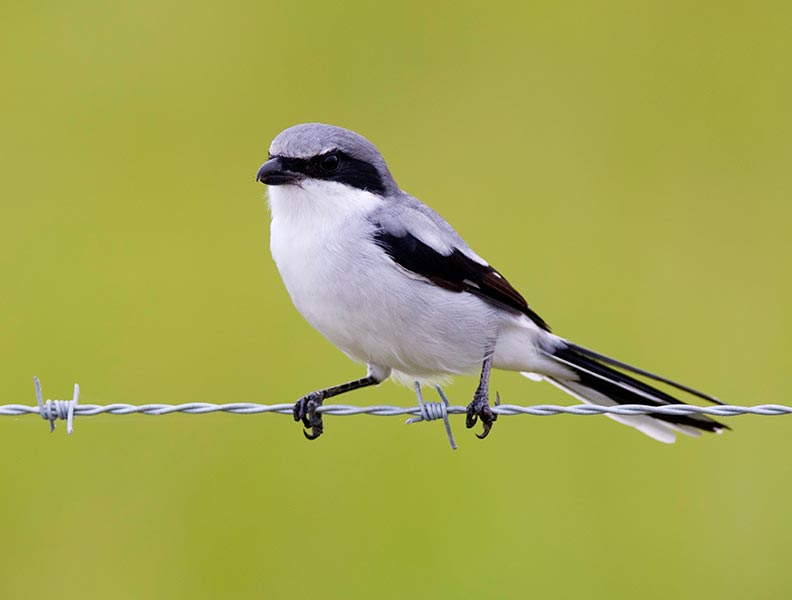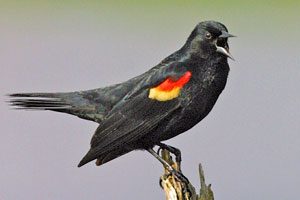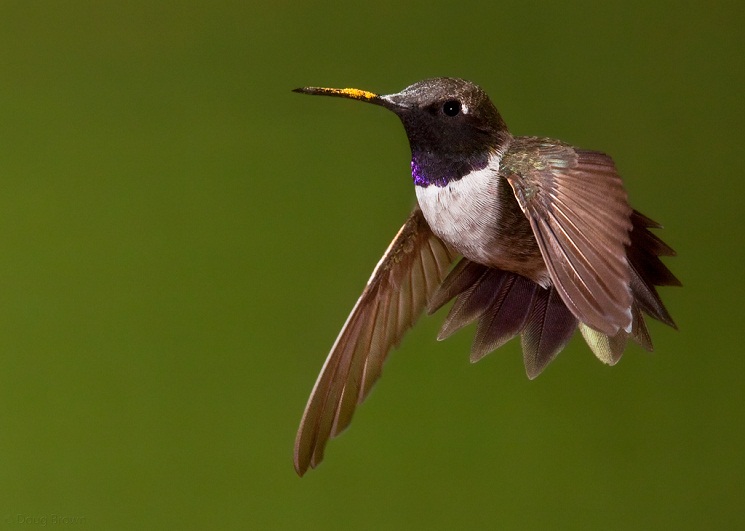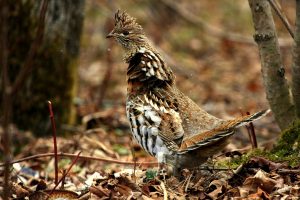What is a Bird?
Birds are winged, feathered, egg-laying, warm blooded (endothermic), two-footed (bipedal) vertebrates belonging to the class Aves. There are more than 10,000 extant species of birds which makes them the most speciose tetrapod vertebrate class in the world. All the living species of birds belong to the Neornithes subclass, inhabiting all types of ecosystems from the Arctic region to the Antarctic region.
The extant species can vary greatly in size. The smallest living species is the Bee Hummingbird which grows no more than 2 inches (5 cm) in size while Ostrich is the largest extant species growing up to 9 feet (2.75 m) in size. The Condors are regarded as the largest birds of prey.
It is indicated by the fossil records that birds first emerged during Jurassic period, approximately 160 million years ago within the theropod dinosaurs. Birds are regarded by paleontologists all over the world to be the only dinosaur clade that succeeded in surviving the Cretaceous-Paleogene extinction event around 65.5 million years ago.
Table of Contents:
Evolution of Birds
As mentioned above, it is accepted by most scientists that birds originated as a specialized subgroup in the suborder theropod dinosaurs. Birds belong to the Maniraptora group of theropods that also includes oviraptorids and dromaeosaurs, among others.
Many non-avian theropods have been discovered that are closely related to modern day birds. This has given birth to arguments regarding the distinction between birds and non-birds.
Modern paleontology shows that avialans or birds are very closely related to the deinonychosaurs, including troodontids, dromaeosaurids and possibly archaeopterygids. These three families form a group known as Paraves. Some animals in this group, including Archaeopteryx and Microraptor, have special physical features for flying or gliding.
The small size of the most primary deinonychosaurs gives rise to the theory that the ancestor of all paravians were arboreal, having adaptive features that enables them to glide or fly. Recent studies show that unlike the carnivorous feathered dinosaurs and the Archaeopteryx, the primitive birds were herbivores.
The evolution of birds led to a great diversity in their form and appearance during Cretaceous Period. The primitive characteristics like teeth and clawed wings remained in many groups, though most groups, including the modern birds, gradually evolved to lose the teeth. The earliest groups like the Jeholornis and Archaeopteryx retained their characteristic long bony tails while the tails became shorter in advanced birds. All modern birds developed better olfactory senses than that in the primitive groups during the late Cretaceous period.
Various groups started developing special adaptive features. For example, the Mesozoic seabird order Hesperornithiformes became well adapted for the marine environments with special adaptive features for hunting fishes. Birds in this order became flightless and primarily aquatic. Despite these extreme specializations, these seabirds represent some very close relatives of the modern birds.
Bird Scientific Classification
The classification given below only includes the taxonomic orders belonging to the extant subclass Neornithes. The traditional classification method known as Clements order (revised by Sibley-Monroe classification) has been used in the following list.
There are two extant superorders in the subclass Neornithes:
Superorder Palaeognathae
Its name has been derived from the Greek word ‘paleognath’, meaning ‘old jaws’. The name refers to the comparatively primitive skeletal system of the species in the superorder, which is more reptilian than that of other birds.
Palaeognathae superorder is divided into two orders that include 49 living species in total. These are:
- Struthioniformes: Ostriches, Emus, Kiwis and Allies
Superorder Neognathae
This superorder comprises of 27 orders that collectively includes around ten thousand different species. The species in the Neognathae superorder have undergone different adaptive changes which produced the major diversity in their appearance (especially of their feet and bills), behavior and function.
- Charadriiformes – Gulls, Plovers, Button-Quails and allies
- Podicipediformes – Grebes
- Sphenisciformes – Penguins
- Phaethontiformes – tropicbirds
- Pelecaniformes – Pelicans and allies
- Procellariiformes – Albatrosses and Petrels
- Phoenicopteriformes – Flamingos
- Falconiformes – Falcons, Eagles, Hawks and allies
- Ciconiiformes – Storks and allies
- Cathartiformes – New World Vultures
- Apodiformes – Swifts and Hummingbirds
- Columbiformes – Doves and Pigeons
- Gruiformes – Cranes and allies
- Pteroclidiformes – sandgrouse
- Psittaciformes – Parrots and allies
- Cuculiformes – Cuckoos and Turacos
- Opisthocomiformes – Hoatzin
- Caprimulgiformes – Nightjars and allies
- Piciformes – Woodpeckers and allies
- Coraciiformes – Kingfishers and allies
Bird Anatomy
The anatomy of these creatures shows many unique adaptive features that facilitate flight.
Skeletal System
The bird skeleton comprises of lightweight bones, which keeps them light enough to fly easily. The pneumatic cavities (large cavities filled with air) in the bones connect them to the respiratory system. The skull bones in adult birds are fused and do not have visible cranial sutures. They have large orbits separated by one bony septum. The spinal column is divided into cervical, lumbar, thoracic and caudal regions.
The number of the cervical vertebras may vary significantly from one species to another. The neck is highly flexible; however, movement is restricted in anterior thoracic vertebras and absent in later vertebras. The last few vertebras fuse with the pelvis and form the synsacrum.
Birds have flattened ribs and a keeled sternum that attaches the flight muscles. But, this arrangement is not present in flightless birds.
Excretory System
Like animals from the reptile class, most birds are uricotelic. This means nitrogenous wastes are extracted from their bloodstream by the kidney and are excreted as uric acid, rather than ammonia or urea, through their ureters into their intestine. These creatures do not have any external urethral opening or urinary bladder (apart from Ostrich), so the uric acid and the feces are eliminated as semisolid waste materials.
However some species, such as hummingbirds, excrete majority of the nitrogenous waste material as ammonia. Like many mammals, birds excrete creatine instead of creatinine. These waste materials along with the intestinal output emerge from the cloacal opening. Additionally, many bird species are known to regurgitate pellets.
Digestive System
The digestive systems of most species belonging to this class are very efficient and allow rapid digestion, which produces high amounts of energy to help in flying.
The muscular crop plays a vital role in the digestion process by softening the foods in the stomach and storing them temporarily to regulate their flow through the digestive system. The shape and size of the crop often varies among different birds.
Respiratory System
Their respiratory systems are among the most complex ones in all animal groups. When they inhale, 75% of the air goes around the lungs to flow directly into their posterior air sac that extends from the lungs, connecting with the hollow spaces in the bones. This way, the bones get filled with fresh air.
The rest of the inhaled air (25%) flows directly to the lungs and takes part in the respiration process. During exhalation, the used air is eliminated from the lungs and is replaced simultaneously by the fresh air stored in the posterior air sacs. Thus, the lungs of birds are constantly supplied with fresh air both during inhalation and exhalation.
Circulatory System
The heart of a bird has four chambers like that of humans and most other mammal species. The origin of their main arteries carrying the blood from the heart lies in right aortic arch or the pharyngeal arch. The blood reaches the postcava from the bird’s limbs via its renal portal system. Unlike in mammals, the nuclei are retained by a bird’s circulating RBCs (red blood cells).
Nervous System
The nervous systems of birds are quite large compared to their body size. This explains their complex and advanced intelligence. The flight-related functions are controlled by the most developed region of their brains while their movements are coordinated by the cerebellum. The cerebrum part of their brains control their behavior patterns, mating, nest-building and navigation.
Sense of smell: Birds have poor sense of smell with notable exceptions including New World Vultures, Kiwis and Tubenoses.
Eyes
Birds have eyelids, but they do not use it for blinking. Their eyes are lubricated by a third eyelid or membrane named the nictitating membrane which moves horizontally. This membrane also protects the eye and allows aquatic birds to see under water by working as contact lenses. The retina of these creatures has a fan-shaped blood supply system called the Great Cormorant.
In some species, the eyes are located at the sides of the heads which provides a very wide visual field. On the other hand, birds like owls have eyes in front of their heads which provides them with a binocular and enables them to estimate the depths of fields.
Most avian species have highly developed visual systems. Raptors and nocturnal birds have strong eye-sight that is eight times sharper compared to humans.
Auditory System
Birds do not have external ears like other animals. Their ears lack the external pinnae; instead they are covered with feathers. In birds like Bubo, Otus and Asio, these feathers create tufts that resemble ears. The inner ears of birds have a cochlea, which is not spiral as that in mammal ears.
Wings
The shape and size of the wings vary between the flying and the flightless birds. Bird wings are actually modified forelimbs with their anatomy being similar to human arms.
The phalanges, metacarpus, carpus, radius, ulna, humerus and scapula fuses together to form the wings. The shoulder is formed with the shoulder blade or scapula, coracoids and humerus.
Feathers and Scales
As mentioned above, feathers are a characteristic feature of avian species (though, studies have proved that some dinosaur species that are no longer considered as true birds also had feathers). Feathers can be of various types with each type taking part in some specialized function.
All feathers grow from the epidermal skin layer, appearing only in some specific skin tracts known as pterylae. The appearance and arrangement of the feathers on the bodies of birds is referred to as plumage. The plumage is different from one species to another and can even vary within the same species depending on age, sex and social status.
Their toes and metatarsus (sometimes, also the ankles) are covered with scales composed of keratin like the claws, beaks and spurs.
Characteristics of Birds
Modern birds are distinguished from other classes of animals with the help of the following characteristic features:
- Presence of feathers: This is one of the main characteristics of modern birds as no other animal is known to possess feathers. Birds take care of their feathers through the processes of preening and molting. Preening refers to the process of keeping the feathers waterproof using the oil produced by the oil glands located near their tails. Old and worn out feathers are replaced by new ones through the process of molting.
- Wings: Their forelimbs are modified to form a pair of wings that allow them to fly. Even flightless birds have modified forelimbs. This is another key characteristic feature that distinguishes birds from reptiles, amphibians, mammals and fishes.
- Ability to fly: Birds are the only creatures capable of flying and gliding. There are certain other animals, such as Bats, who locomote by gliding. But, they are incapable of true flight. Birds have numerous adaptive features that assist them to fly. However, there are many flightless bird species, including Ostrich. Penguin and Emu. The largest extant flying bird is the Kori Bustard while the Ruppell’s Vulture is considered to be the highest flying species. The Peregrine Falcon holds the record for being the fastest flying bird.
- Characteristic mouth: They do not have lips and teeth; instead they have keratinous beaks that help them to collect food and eat.
- Unique digestive system: Their digestive system includes a muscular pouch known as crop for gizzard and storage. It contains stones that are swallowed by the creatures to aid in digestion. These stones help to grind the foods in the stomach, which makes up for the absence of teeth.
- High metabolic rate and high body temperature: Birds need plenty of energy for flying. Their high metabolic rate ensures that they have enough energy for flight. The average body temperature of these creatures remains around 40°C, which is 2°C higher than the average human body temperature.
- Four-chambered heart: The hearts of animals belonging to this class are distinctly divided into four chambers. This characteristic helps to differentiate them from reptiles (except the crocodilian species) and amphibians. However, mammals also have four-chambered hearts.
- Characteristic Skeletal System: The light-weight yet strong skeletal system is another characteristic feature of these creatures.
Birds Habitat
Birds are found in all types of habitats including desert habitats, temperate regions, tropical habitats, rainforests as well as cold arctic regions. There are many birds, including Egret, Kingfisher, Crane, Duck and Loon that live in watery habitats like lakes, ponds and rivers.
Birds living in marine habitats include Gull and Albatross. Various birds of prey including Eagles, Hawks and Condors inhabit desert habitats. Parrots, Cockatiels, Finches, Macaws and Toucans are some of the numerous birds that live in rainforests.
Birds Reproduction
Around 95% of all bird species are monogamous in nature. They choose a mate during the breeding season and remain with them for the rest of the season or in some cases, for the rest of their lives. Other mating systems including polyandry, polygyny, polygynandry, polygamy and promiscuity are also practiced by some species.
Polygamous breeding refers to the breeding system where the females raise the young birds without the male’s help. Some species may even practice different breeding systems, depending on circumstances.
In most species, breeding involves some type of courtship display that is generally performed by the males. There are numerous species that display homosexual behavior both in males and females.
During the breeding season, many birds defend their territory from other members of the same species. This ensures the availability of food for the newborn birds or chicks. Various birds, including swifts and seabirds are unable to defend their own territory. So, they breed in large colonies to protect their chicks from predators.
Birds reproduce by laying amniotic hard-shelled eggs with the shells mainly composed of calcium carbonate. Species that nest in covered locations like in holes or burrows tend to lay pale or white eggs while birds with open nests lay camouflaged eggs.
Brood Parasitism
Brood parasitism is the practice of laying eggs in the nest of another bird because the parasitic bird is unable to raise her own young. Once the parasitic female lays her eggs in another bird’s nest, the eggs are hatched and the chicks are taken care of by the host.
There are two types of brood parasites: obligate brood parasites (who are unable to raise their own young) and non-obligate brood parasites (who can raise their chicks, but practice parasitism to increase reproductive output). Examples of obligate brood parasites include Cuckoos, Honeyguides and Estrildid Finches while birds like African Weavers and Bank Swallows are well-known non-obligate brood parasites.
Life Cycle of Birds
The incubation period begins after the females complete laying the eggs. Incubation is a process that optimizes the temperature for proper development of the chicks. The duration of the incubation period varies between different species with the eggs hatching once it is over.
The incubation period begins after the females complete laying the eggs. Incubation is a process that optimizes the temperature for proper development of the chicks. The duration of the incubation period varies between different species with the eggs hatching once it is over.
The chicks may be completely helpless or partially/completely independent at the time of hatching, depending on their species. The nature and length of parental care can vary greatly in birds from different order and species. The young birds of the monogamous species are taken care of by both parents. In the megapode species (short-winged large-footed birds of Australasia), parental care does not last any longer than hatching with the chicks being capable of taking care of themselves immediately after birth.
However, the parental care can continue for a long time in many seabirds. The Great Frigatebirds are known to have the longest period of parental care. Their chicks complete fledging at six months of age and need to be fed by their parents for another 14 months.
What Do Birds Eat?
- Avivorous: The diet of avivorous birds mainly consists of smaller birds. Various small raptors, including the accipiters, are avivorous as they often hunt small backyard birds. Larger raptors even prey on pigeons and doves.
- Carnivorous: Carnivorous birds prey on various fishes, amphibians, reptiles and small mammals (mostly rodents). Apart from the birds of prey, other species like waders or shorebirds and corvids are carnivorous in nature.
- Nectivorous: The diet of the nectivores consists of flower nectar. Some of the well known Nectivorous species include hummingbirds, sunbirds and honeycreepers.
- Frugivorous: Fruit-eating birds are referred to as frugivores. These include Waxwings, Orioles and Toucans who feed exclusively on fruits and berries.
Birds Conservation
Human activities have caused many species to decrease in population over the recent years. More than hundred species, including the Dodo, have gone completely extinct. So, various wildlife conservation associations are taking necessary measures for protecting the populations of various bird species all over the world.
Over 1000 different species have been listed as threatened or endangered by the IUCN and Birdlife International. Habitat destruction due to urbanization, hunting and long-line fishing by-catch are some of the main threats to their existence. Climate change and predation by invasive or introduced species are other causes of population decrease.
Conservation groups and Governments are trying to protect bird populations by passing laws for their preservation, restoring their habitats and establishing captive populations so that they can be re-introduced. Various laws have been passed for preventing over-hunting of birds. These laws include the game birds as well to protect their populations.
These measures have been successful in restoring the populations of various species like the Norfolk Parakeet and California Condor to some extent.

